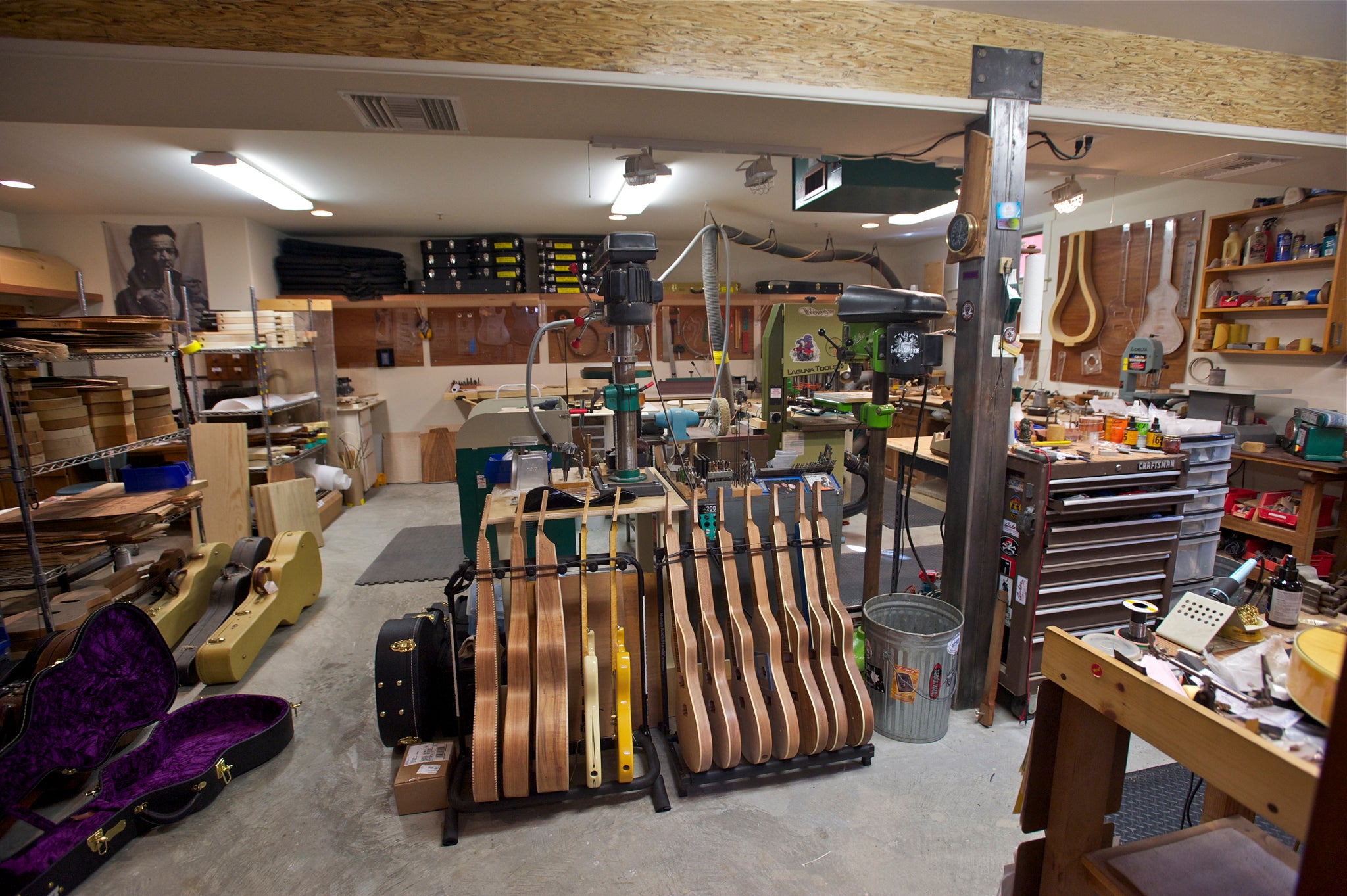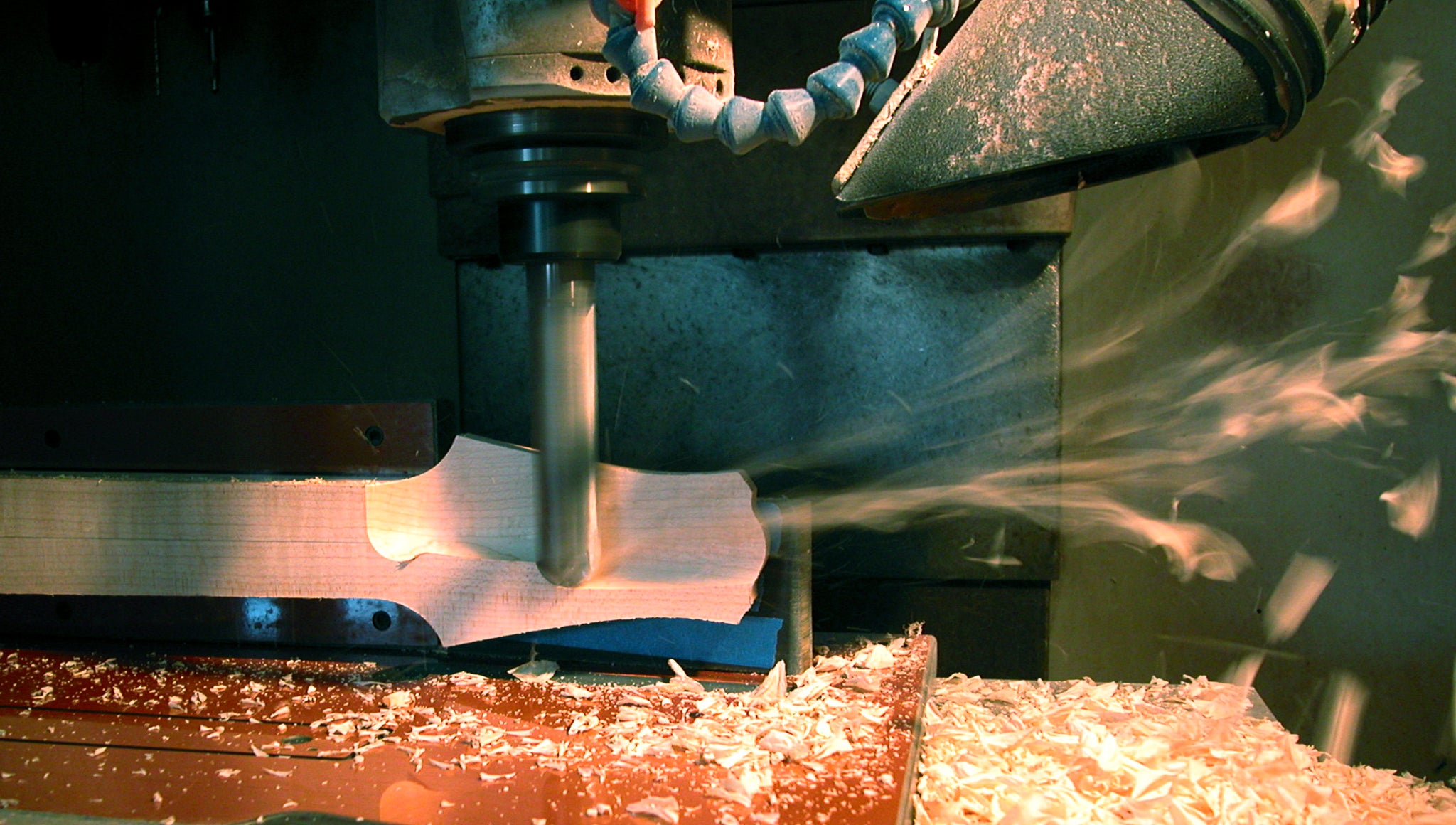The Process
Not all guitars are created equal.
Asher Guitars still employs old world lutherie techniques using hand tools, elbow grease, and persistence combined with the precision of modern technology from power tools and CNC machines. The technical blend of old meets new results in a masterfully designed, beautifully sounding instrument of professional quality that will last generations.
So how does our process work?
Quality starts at the beginning: The wood. Bill Asher hand selects the finest tone woods for grain structure, weight and color. All of our wood is sustainably and or responsibly sourced. Our wood also meets CITIES guidelines and any old growth wood that we obtain is accompanied with the proper regulatory paperwork. The Asher shop is run entirely on solar power, and we make our best efforts at producing zero waste of wood products. We respect trees as a valuable environmental resource so we recycle, reuse or donate all sawdust, shavings and wood pieces.
Rough cutting: Planks of wood are rough milled to various dimensions, depending on model, specific part or type of guitar. The wood is then allowed to cure before it is hand cut to the final shape with guidance from our precision templates. Figured top woods, binding and purfling are added. Guitar tops of flamed or figured woods of certain thicknesses are book matched together, then glued to the body. Binding or purfling is then added to routed channels then glued and clamped into place.
Precision: CNC machines are used to help make the necks and some of the Asher guitar bodies. Accuracy in guitar necks and bodies is beneficial because it allows for increased consistency throughout and a clean-entry, snug fit into the neck pocket. The CNC technique also routes perfect channels for our custom compression truss rods that are easily adjustable under full string tension. After the necks are CNC carved, we manually do a final hand shaping to get the desired profile. Fret slots, which are precisely cut by CNC, are carefully hand fretted. We spend extra time with our attention to detail to achieve an optimal feel.
Finishes: Nitro, Poly, Gloss, Stain or Relic? We offer both nitrocellulose and polyester lacquer finishes, as well as relic’ing of varying degrees on either finishes. These finishes are performed by a handful of skilled artists that can create the perfect sunburst or custom color. A nitro cellulose finish usually takes at least 8 weeks for multiple rounds of spraying, sanding, curing and buffing. Polyester finishes are shot with a high quality material that is sprayed as thin as possible. This is a fantastic finish option that offers a great sound quality and increased durability. Satin nitro finishes and oil stains are also available.
Relic’d finishes and aged hardware add an authentic road-worn look to any guitar. Subtle or extra rugged, Bill Asher performs all the relicing by hand with techniques learned from some of the top relic specialists in the business.
Electronics, machineries and details: For some, electronics are everything. For us, they are important, but just part of the equation to achieving a great sounding guitar. Pickups, knobs, tuners, bridges, switches etc. are specifically chosen components, many of which are custom made for our guitars.
Final Assembly: Putting the guitar together is usually the most fun and gratifying part (next to seeing it played live at the Greek Theater in front of ten thousand people.) We finally get to see all the parts come together creating a unique, handcrafted instrument. This is our opportunity to make any final adjustments and tweaks and to check the sound quality and playability to make sure it meets our rigorous standards and passes the test.
These guitars are certified Bad Ass.






